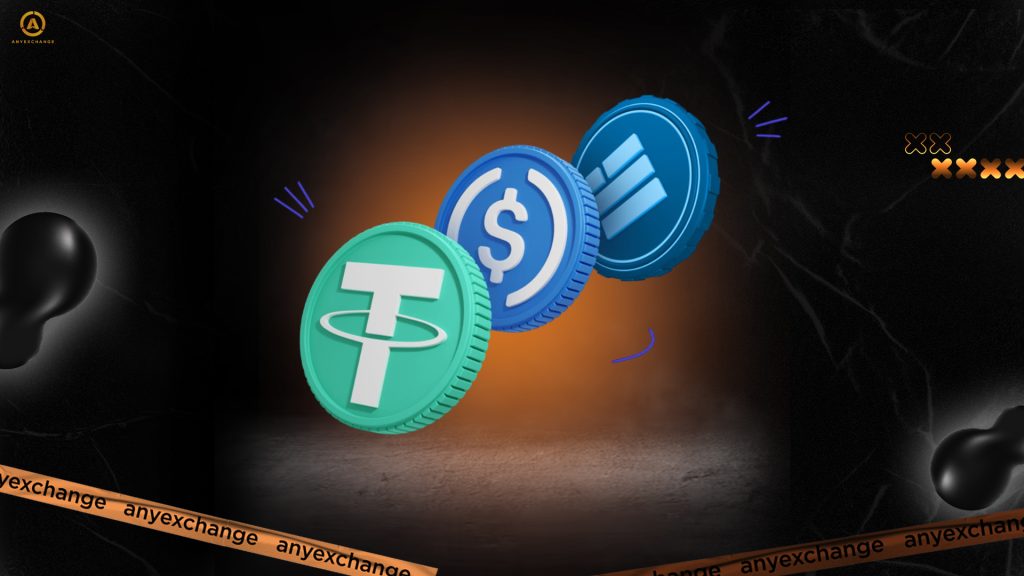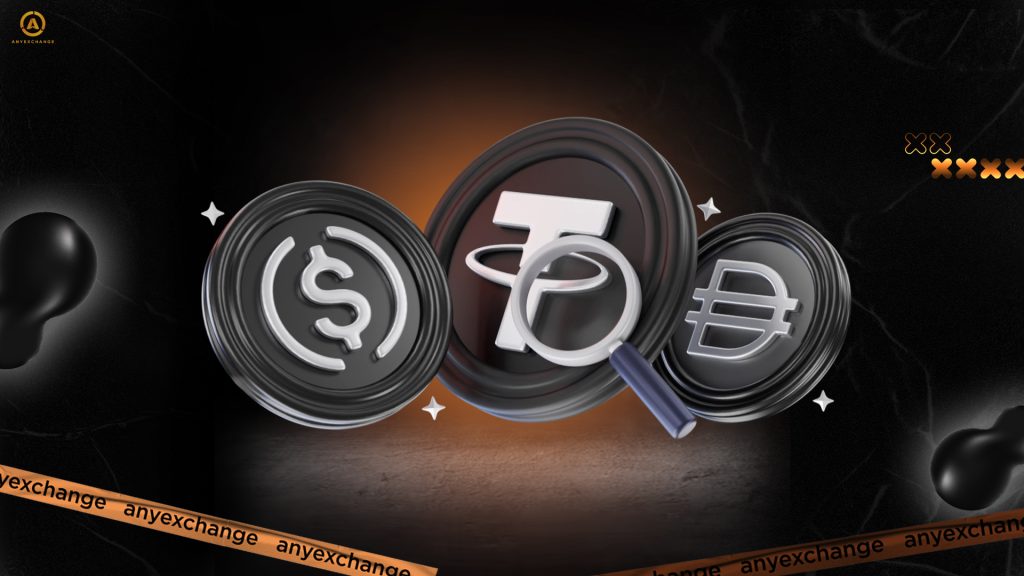
According to Bernstein analysts’ forecasts, the stablecoin market could reach $400 billion by the end of 2025, nearly doubling the current level. Experts attribute this growth to the increasing demand for assets with minimal volatility, particularly in the context of global inflation and the instability of fiat currencies.
Stablecoins are digital assets whose value is tied to stable reserves, such as U.S. dollars, euros, or gold. Unlike traditional cryptocurrencies, stablecoins are not subject to sharp exchange rate fluctuations, providing users with a reliable tool for storing value and making payments.
The rapid growth of this crypto industry segment is due to many factors. In this article, we will analyze the trends driving the rise of stablecoins in 2025, assess their current level of adoption, and try to predict their future in the coming years.
The rise in popularity of stablecoins

In 2025, the stablecoin market continues to grow: at the beginning of the year, its total capitalization exceeded $200 billion. According to CoinMarketCap, it has already surpassed the $253 billion mark. While stablecoins occupied a niche position in the early 2020s, they have become an integral part of the crypto economy. Several global factors are key drivers of their popularity:
- The demand for fixed-value assets amid high cryptocurrency volatility.
- The growing need for fast, cheap payment methods and tools for preserving value, especially in developing countries.
- The increasing integration of stablecoins with DeFi enhances functionality and liquidity.
- The rapid development of regulations is creating an optimal legal framework for projects and investors alike.
Several stablecoins dominate the market. According to the latest data from CoinMarketCap, Tether (USDT) is in the lead, boasting a market capitalization of over $153 billion. It is the third-largest cryptocurrency in the world, after Bitcoin and Ethereum.
USD Coin (USDC), managed by the Centre consortium and backed by Circle and Coinbase, has established itself as a transparent alternative actively used in institutional transactions. Its market cap is approximately $61.4 billion.
DAI, issued by MakerDAO, is an algorithmic stablecoin partially collateralized by crypto and tokenized assets (RWA). Thanks to its decentralization and integration with DeFi protocols, DAI is a highly sought-after instrument with a market capitalization of approximately $5.3 billion.
Stablecoin Market Trends in 2025

According to a Messari report, stablecoin adoption will reach new heights in 2025, with this asset type expected to account for over 65% of daily cryptocurrency transactions. This growth is due to increasing confidence among institutional investors and active implementation in cross-border settlements, particularly in developing economies in Asia, Latin America, and Africa. Users and companies increasingly choose USDT or USDC as an alternative to SWIFT and traditional currencies, benefiting from instant transfers and low fees.
Regulation of stablecoins in 2025 will have a separate impact. The US is promoting a concept involving licensing issuers and mandatory reserve requirements. The EU already has the Markets in Crypto Assets Regulation (MiCA) in place, which requires the disclosure of reserve structures and reporting.
Technologically, the focus is on scalability, cross-chain compatibility, and security. Protocols such as LayerZero and Chainlink CCIP facilitate the integration of stablecoins into DeFi across different blockchains. This reinforces their role as the basis for asset tokenization, derivatives, and payment infrastructure.
Applications and Advantages of Stablecoins
Stablecoins are an effective financial tool for daily transactions, capital preservation, and complex DeFi operations.
- Using stablecoins for cross-border payments allows you to bypass the limitations of traditional systems. Transactions are carried out in seconds with minimal fees and no intermediaries.
- Companies in developing countries are increasingly using stablecoins for payments, which is particularly important in conditions of inflation or sanctions. For instance, platforms like Stellar and Ripple are implementing pilot projects for stablecoin transactions between banks and fintech startups.
- The stable exchange rate of stablecoins allows investors to effectively manage risks and preserve capital.
- The importance of stablecoins for financial accessibility is growing. In countries with limited access to banking services, stablecoins serve as an alternative to dollar accounts and help preserve savings. Mobile applications such as Trust Wallet, Binance Pay, and Celo Wallet enable millions of users to engage with digital dollar assets without a bank account.
- In the DeFi ecosystem, stable tokens play a key role as a unit of account. They are used as collateral for loans, in liquidity pools on platforms such as Uniswap, Curve, and Aave, and in yield farming strategies.
Challenges and Risks
- Regulatory risks: Governments want to control the movement of digital assets, especially those that could compete with national currencies. Europe has seen particularly significant regulatory changes with the implementation of the Markets in Crypto-Assets (MiCA) law in 2024. Under MiCA, stablecoins are classified as “electronic money” and must adhere to strict reserve, transparency, and licensing requirements. Against this backdrop, USDT’s position in Europe has weakened. In 2024, the largest European exchanges announced plans to delist USDT for EU customers, preferring more transparent alternatives, such as USDC and EURC from Circle. In other words, despite being perceived as more stable than cryptocurrencies, stablecoins’ very advantage makes them highly dependent on external regulation.
- Reserve risks: The most popular stablecoins are backed by fiat assets, but the transparency and quality of the reserves remain questionable. This poses a threat to institutional adoption, especially in highly regulated jurisdictions. This is why, in 2025, the analysis of the stablecoin market began to inсlude, in addition to market capitalization, the level of reserve transparency.
- Competition from algorithmic stablecoins: DAI, Frax, and Ethena (USDe) promise to be a decentralized alternative to centralized leaders. Despite the caution that followed the collapse of TerraUSD, interest in hybrid and algorithmic solutions is growing.
Top Stablecoins for 2025
The best stablecoins in 2025 will be determined not only by issuance volume, but also by regulatory compliance and integration with DeFi and CeFi ecosystems. While the market leaders remain dominant, new players are emerging and shaping fresh trends in cryptocurrencies, such as the use of stablecoins as universal instruments for settlement, legality, and capital protection.
Market leaders
Tether (USDT) remains the primary tool for trading on centralized exchanges. However, new regulatory standards are damaging the segment leader’s image, creating obstacles to further institutional adoption.
USD Coin (USDC), on the other hand, is raising its status thanks to its complete transparency, regular reporting, and bank support. In 2025, corporate adoption of stablecoins, especially in Europe, will be associated with USDC.
DAI, a fully decentralized stablecoin, maintains a strong position as an alternative to centralized assets for collateral. DAI continues to evolve toward more sustainable reserves and autonomous governance.
Promising newcomers
- PYUSD from PayPal is focused on e-commerce payments. It is based on Ethereum, licensed in the US, and backed by the dollar.
- EURC, a euro stablecoin approved under MiCA, is another promising newcomer from Circle. It is rapidly gaining popularity in the EU amid the departure of USDT.
- USDe (Ethena) is a new-generation synthetic stablecoin that uses hedging strategies. It is becoming an increasingly popular DeFi tool, especially in developing countries with limited access to dollar liquidity.
Investment potential
Investments in stablecoins attract retail and institutional investors alike, offering low volatility and the opportunity to earn income through DeFi and CeFi instruments. In some economies, stablecoins are the only means available for hedging and placing liquid capital.
Trading strategies involving stablecoins, such as arbitrage, lending, swaps, and placement in automated market makers, are also becoming increasingly popular. Thanks to the development of protocol infrastructure and the integration of multi-chain solutions, the demand for stablecoin trading strategies is growing.
Conclusion
We are witnessing the rapid growth of stablecoins and their adoption in decentralized finance (DeFi), international trade, settlements, and as a store of value in countries with unstable economies. Stablecoins are becoming part of the strategies of digital banks, national central bank digital currency (CBDC) platforms, and independent crypto projects.
The future of stablecoins is directly linked to new regulatory standards, the introduction of multi-currency solutions, and synthetic models that are changing the traditional concept of stable coins.
We recommend that investors and users closely follow these trends. The architecture of the future of finance is taking shape. Stablecoins are emerging not just as a replacement for the dollar but also as the infrastructural foundation of a decentralized economy.
Thank you for your attention. Invest safely and profitably!
AnyExchange is an exchanger where you can convert cryptocurrency at the most favorable rates and make fast, secure money transfers around the world.
FAQ
What are stablecoins, and how do they differ from other cryptocurrencies?
Stablecoins are cryptocurrencies pegged to stable assets to minimize volatility. Unlike regular coins, they maintain a fixed value and are widely used for settlements, trading, and DeFi.
Why will stablecoins become a trend in 2025?
The main reasons are high inflation in many countries, their growing integration into payment and investment services, and the development of the regulatory framework. According to market forecasts presented by Circle and Kaiko, the volume of stablecoin transactions in 2025 will exceed $8 trillion.
Which stablecoins are leading the market?
The most popular ones are USDT, USDC, and DAI. These stablecoins offer high liquidity and compatibility with DeFi protocols, as well as wide coverage. In 2025, projects such as Ethena (USDe) and First Digital USD (FDUSD) were added to the list, showcasing innovative sustainability strategies.
How are stablecoins used in DeFi?
They serve as a medium of exchange and a unit of account, offering stability and predictability in mechanisms like liquidity pools, lending, staking, and yield farming.
What risks are associated with investing in stablecoins?
The main risks are issuer centralization, low reserve transparency, and possible regulatory restrictions.
How will regulation affect stablecoins in 2025?
In particular, the European MiCA and US initiatives are tightening requirements for transparency, licensing, and collateralization. While this promotes long-term stability, it also limits the maneuverability of some issuers.
What are the advantages of using stablecoins for payments?
They enable fast, inexpensive, cross-border transactions without the involvement of banks. Stablecoins are an alternative to slow, cumbersome SWIFT and traditional fintech services for payments.
Can stablecoins rеplace fiat currencies?
A complete replacement is unlikely, but stablecoins already perform the functions of money in certain scenarios, such as countries with hyperinflation and cross-border payments. This reinforces the global influence of stablecoins, especially in developing economies.
What technologies support the development of stablecoins?
Blockchain technology, primarily Ethereum and its L2 networks (Arbitrum and Optimism), as well as BNB Chain, Solana, and Tron, forms the basis for stablecoins. Scalability, cross-chain compatibility, and integration with wallets and DeFi protocols are key growth factors.
How could I choose the best stablecoin for investment?
Consider liquidity, reserve transparency, platform compatibility, and regulatory compliance. Including stablecoins in your investment portfolio is an essential part of a diversified strategy, especially in times of market volatility.





